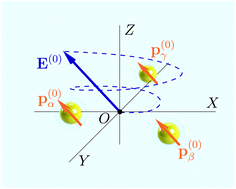Colloids in rotating electric and magnetic fields: designing tunable interactions with spatial field hodographs
Abstract
Opening a way to designing tunable interactions between colloidal particles in rotating electric and magnetic fields provides rich opportunities both for fundamental studies of phase transitions and engineering of soft materials. Spatial hodographs, showing the distribution of the field magnitude and orientation, allow the adjustment of interactions and can be an extremely potent tool for prospective experiments, but remain unstudied systematically. Here, we calculate the tunable interactions between spherical particles in rhodonea, conical, cylindrical, and ellipsoidal field hodographs, as the most experimentally important cases. We discovered that spatial hodographs are reduced to each other, providing a plethora of interactions, e.g., repulsive, attractive, barrier-like, and double-scale repulsive ones. Complementing the “magic” conical angle, the “magic” compression and ellipticity of cylindrical and ellipsoidal hodographs are introduced. In the “magic” hodographs, the interactions become spatially isotropic and attain dispersion-force-like asymptotic (the same for pairwise and many-body energies), being attractive or repulsive, if the particle permittivity is larger or smaller than that of the solvent. With the diagrammatic method and numerical calculations, we obtained physically meaningful fits to the many-body tunable potentials for silica (iron oxide) particles in deionised water in the rotating electric (magnetic) fields. Our results provide essential guidance for future experiments and simulations of colloidal liquids, crystals, gels, and glasses, important for a broad range of problems in condensed matter, chemical physics, physical chemistry, materials science, and soft matter.



 Please wait while we load your content...
Please wait while we load your content...